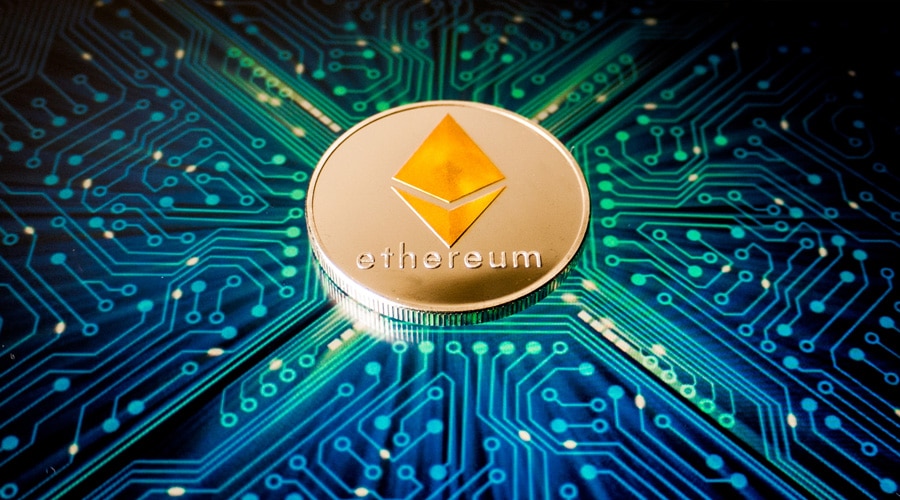Ethereum is one of the most popular Blockchain networks that is widely used for decentralized applications, smart contracts, and the creation of new cryptocurrencies. Ethereum has been known for its scalability issues, high transaction fees, and slow processing time. However, the Ethereum development team has been working tirelessly to address these issues and is planning to introduce several upgrades and improvements to the Ethereum network that could potentially impact its price.
Ethereum 2.0: A Solution to Scalability Issues
One of the major issues faced by Ethereum is scalability. The current version of Ethereum can only process around 15 transactions per second, which is far less compared to traditional payment methods such as Visa and Mastercard. However, the upcoming Ethereum 2.0 upgrade aims to address this issue by introducing a new consensus mechanism called Proof of Stake (PoS).
In the PoS mechanism, validators are required to stake a certain amount of Ethereum to participate in the validation process. This mechanism is expected to significantly reduce energy consumption and increase the network’s processing speed. The Ethereum 2.0 upgrade is expected to be rolled out in phases, and the first phase has already been launched. If the Ethereum 2.0 upgrade is successful, it could lead to increased adoption of the Ethereum network and potentially increase the price of Ethereum.

EIP-1559: Reducing Transaction Fees
Another major issue faced by Ethereum is the high transaction fees, which can sometimes be more than $100 per transaction during periods of high network congestion. The Ethereum Improvement Proposal (EIP)-1559 aims to address this issue by introducing a new transaction fee mechanism that automatically adjusts the transaction fee based on network congestion.
In addition to reducing transaction fees, EIP-1559 also proposes to burn a portion of the transaction fees, which would effectively reduce the supply of Ethereum. This could potentially increase the price of Ethereum as the supply of Ethereum decreases.
Layer-2 Solutions: Improving User Experience
Layer-2 solutions aim to improve the user experience on the Ethereum network by reducing the burden on the main Ethereum network. Layer-2 solutions work by processing transactions off-chain and then settling them on the main Ethereum network.
One of the popular Layer-2 solutions is the Optimism rollup, which can process up to 2,000 transactions per second. This is a significant improvement compared to the current Ethereum network, which can only process around 15 transactions per second. The introduction of Layer-2 solutions is expected to reduce transaction fees, increase processing speed, and improve the user experience on the Ethereum network. This could potentially increase the adoption of Ethereum and the price of Ethereum.
NFTs and DeFi: Driving Demand for Ethereum
Non-fungible tokens (NFTs) and decentralized finance (DeFi) are two of the major applications built on the Ethereum network. NFTs have gained significant popularity in recent years, and some NFTs have sold for millions of dollars. The Ethereum network is widely used for the creation and sale of NFTs, which has driven demand for Ethereum.
DeFi is another major application built on the Ethereum network. DeFi enables users to access financial services such as lending, borrowing, and trading without the need for a centralized intermediary. DeFi has gained significant popularity in recent years and is expected to continue to grow in the future. As DeFi applications are built on the Ethereum network, the demand for Ethereum is expected to increase, which could potentially increase the price of Ethereum.
Conclusion
The Ethereum development team is working tirelessly to address the issues faced by the Ethereum network and to introduce upgrades and improvements to the network. The introduction of Ethereum 2.0, EIP-1559, and Layer-2 solutions refer to off-chain protocols and mechanisms that aim to improve the scalability and performance of blockchain networks such as Ethereum. These solutions work by processing transactions off-chain and then settling them on the main blockchain network. By doing so, Layer-2 solutions aim to reduce the burden on the main blockchain network and improve the user experience.
One of the popular Layer-2 solutions is the Optimism roll-up, which is designed to significantly improve the scalability and transaction processing speed of the Ethereum network. Optimism rollup is a type of sidechain that is attached to the Ethereum network, allowing for faster and more efficient transaction processing.
















